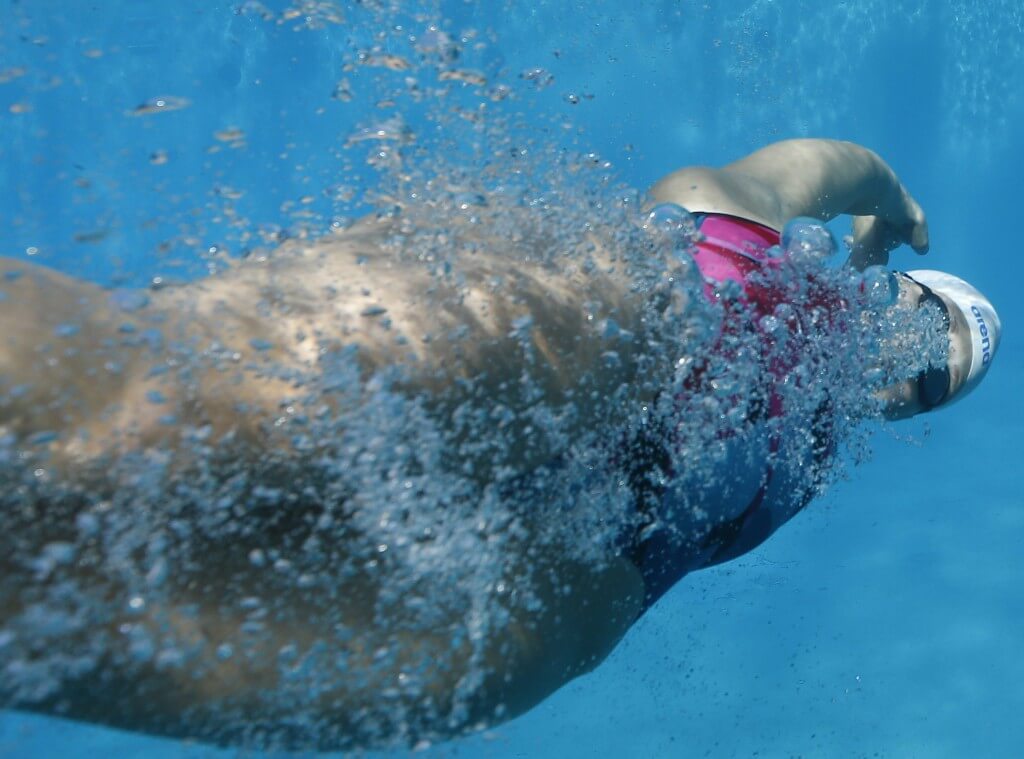Boosting Your Way to Better Race Speed in This Week’s Workout

Photo Courtesy: Bob Stanton-USA TODAY Sports
By Ronald Hehn
Surrounded by a culture consumed by debates concerning ‘USRPT vs. Traditional Training’ and ‘Quality vs. Quantity’, this workout approaches the concept of race-pace from a very different perspective.
For years, coaches have disciplined athletes for touching the bottom of the pool during workouts. However, this workout encourages athletes to utilize the bottom of the pool in order to achieve race-pace. The “Boost” is a useful tool to simulate race-pace swimming and improve general athleticism in your swimmers.
The “Boost”:
The concept of the “Boost” is nothing new; it was invented by every “slacker” with an inability to complete a full length. In order to properly execute this maneuver, an athlete must submerge to the bottom of the pool and assume a squat position; legs should be bent at a 90-degree angle as if the athlete was attempting a vertical jump. The athlete must have their arms in a streamline position and jump towards the surface at a 45-degree angle. Upon arrival at the surface, the athlete must execute a proper break-out and begin swimming at race-pace.
The Main Set is a great opportunity to utilize “Boosts” to construct a race-pace 100:
The Start:
The first 12.5 must focus on perfect body-alignment and posture. It should be performed as underwater streamline kick. The athlete must count the number of dolphin kicks required to cover the distance; the number of dolphin kicks should be reduced each round, requiring greater distance-per-kick.
The Turn:
The 25 is began from mid-pool. To begin, the athlete must submerge and take a forceful jump off of the bottom of the pool towards the turn end (i.e. “Boost”) attempting to achieve race pace. Following the “Boost”, the athlete must attempt to maintain speed into the turn and carry it into the next 12.5. On the turn, the athlete must mimic the same proper body-alignment and posture used during the underwater 12.5.
Turn Endurance:
The 50 is also started from mid-pool. Similar to the 25, the athlete must begin with a “Boost”. The athlete will experience a turn at two different speeds: the first turn is done at a higher speed with less fatigue, and the second turn is done at a lower speed with greater fatigue. The athlete must strive to perform each turn consistently despite different levels of fatigue and velocity.
The Finish:
The final 12.5 is started from mid-pool, beginning with a “Boost”. The athlete should associate the end of a race with high velocity and maintenance of momentum moving into the finish. Each round, it is important to begin the “Boost” from a consistent starting point in order to make adjustments that improve the timing of the finish; the athlete should avoid gliding into the wall or “jamming” the finish.
Inspired by every kid labeled a “slacker”, the “Boost” is a great way to generate speed and simulate race-pace performances without the use of equipment.



